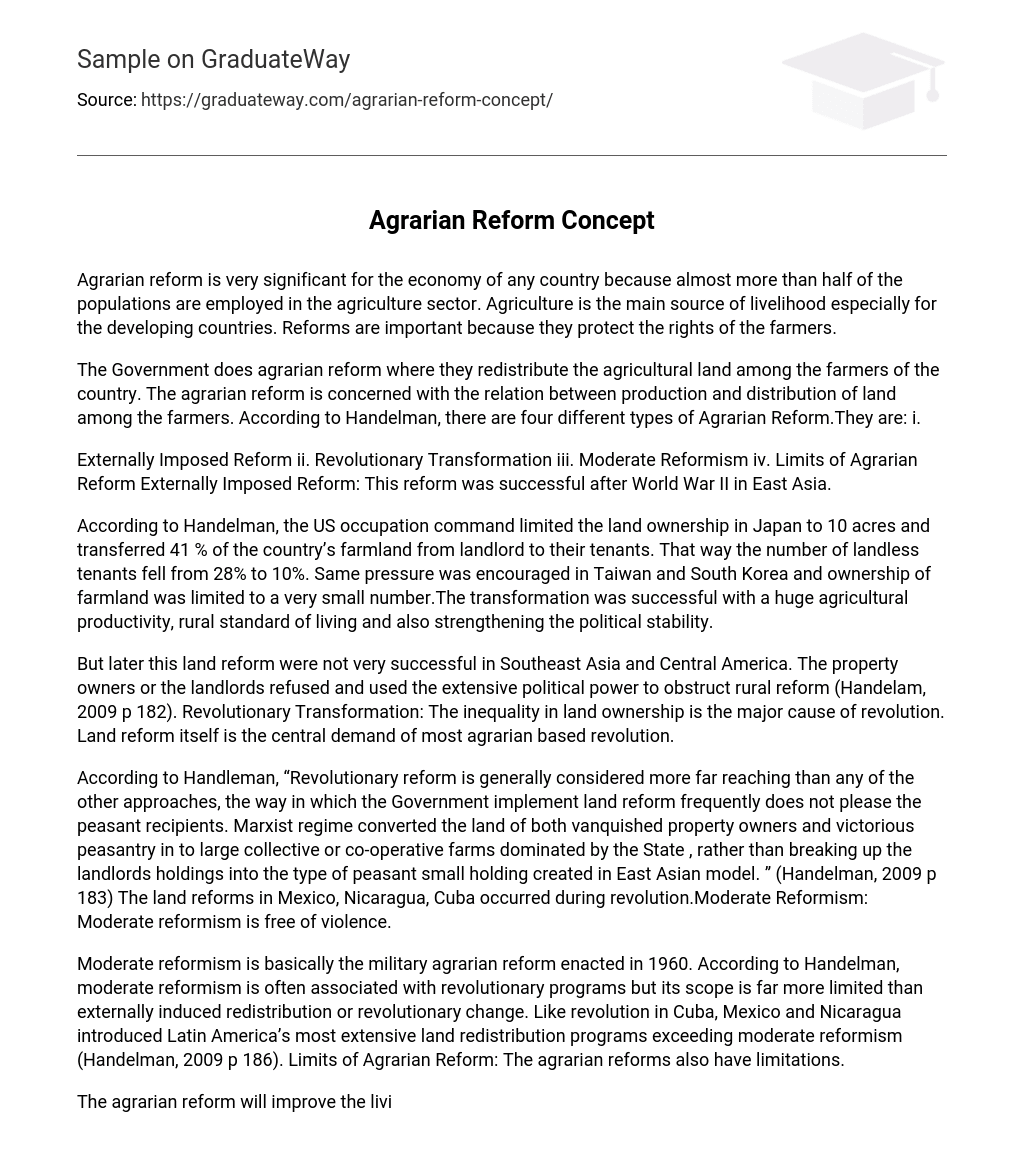In developing nations, agrarian reform is crucial for the economy as it heavily relies on the agriculture sector, which serves as the primary source of livelihood for over 50% of the population. Therefore, implementing reforms to protect farmers’ rights becomes necessary.
The Government carries out agrarian reform, which involves the redistribution of agricultural land to farmers nationwide. This reform focuses on addressing the relationship between production and the distribution of land among farmers. Handelman categorizes agrarian reform into four distinct types:
Externally Imposed Reform, Revolutionary Transformation, Moderate Reformism, and Limits of Agrarian Reform were different approaches to reform. One successful example was the externally imposed reform in East Asia after World War II.
Handelman states that during the US occupation of Japan, land ownership was restricted to 10 acres and 41% of the country’s farmland was transferred from landlords to their tenants. As a result, the percentage of landless tenants decreased from 28% to 10%. Similar measures were implemented in Taiwan and South Korea, where ownership of farmland was also limited. This transformation resulted in significant improvements in agricultural productivity, the rural standard of living, and overall political stability.
However, land reform proved to be largely unsuccessful in Southeast Asia and Central America. Landowners and landlords used their significant political power to resist and hinder rural reform efforts (Handelam, 2009, p. 182). Land ownership inequality is the primary catalyst for revolutionary movements, with land reform serving as the foremost objective of agrarian-based revolutions.
According to Handleman, Revolutionary reform is often considered more extensive than other approaches. However, the implementation of land reform by the government often disappoints the peasant recipients. Under Marxist regimes, land owned by both defeated property owners and successful peasants is transformed into large collective or cooperative farms controlled by the state. This is different from the East Asian model, where the landlords’ estates are divided into smaller peasant-owned plots.
The land reforms in Mexico, Nicaragua, and Cuba took place during revolutionary periods. Moderate reformism, on the other hand, does not involve violence.
Moderate reformism, which was implemented in 1960, is essentially the military agrarian reform. Handelman argues that while moderate reformism is commonly linked to revolutionary initiatives, its reach is considerably narrower compared to externally-induced redistribution or revolutionary transformations. For instance, countries like Cuba, Mexico, and Nicaragua introduced comprehensive land redistribution programs that went beyond the bounds of moderate reformism (Handelman, 2009 p 186). The agrarian reforms also possess limitations.
According to Handelman (2009, p. 187), the limited availability of land poses a challenge to improving the living standards of peasants through agrarian reform. Handelman argues that in order to uplift the living standards of peasants, wealth and government resources need to be shifted from urban areas to rural areas. However, Handelman also acknowledges that agrarian reform has not been successful in redistributing poverty within the countryside, as rural poverty still persists.
(2009). The Challenge Of Third World Development. New Jersey, Prentice Hall. From studying the Sociology of Developing Countries this quarter, I gained significant knowledge about the obstacles encountered by developing nations.
Developing countries face challenges in political underdevelopment, poverty, and economic and social underdevelopment. In the third world countries, rural poverty is identified as the primary issue. The size of their populations often surpasses the capacity of their land and resources, which can result in conflicts both between nations and among ethnic groups within nations.
In addition, I have studied various sociologists’ perspectives on the issue.





